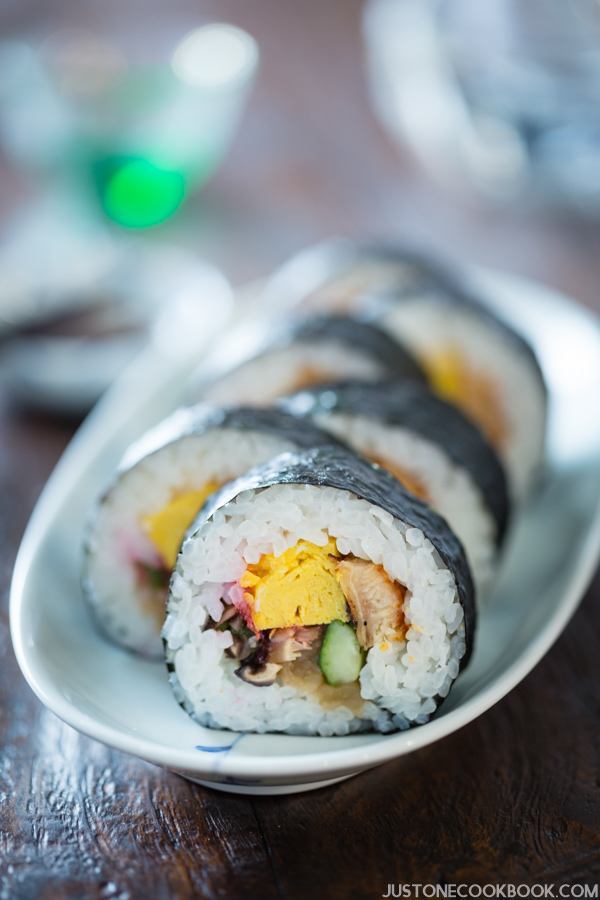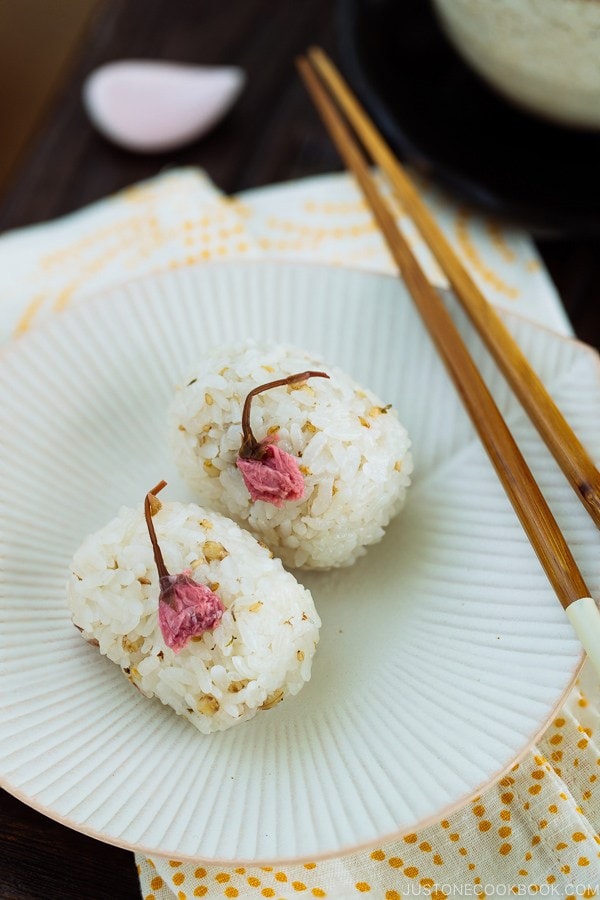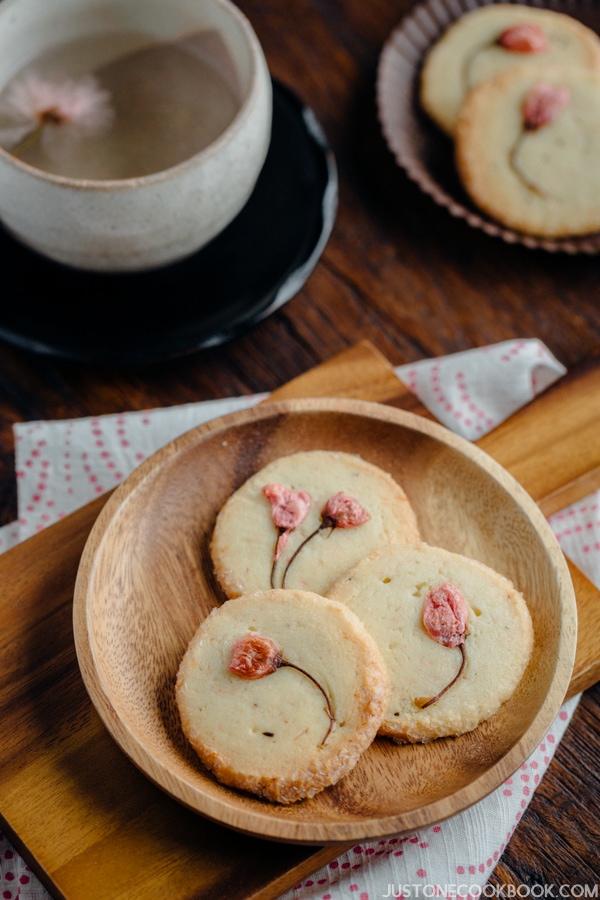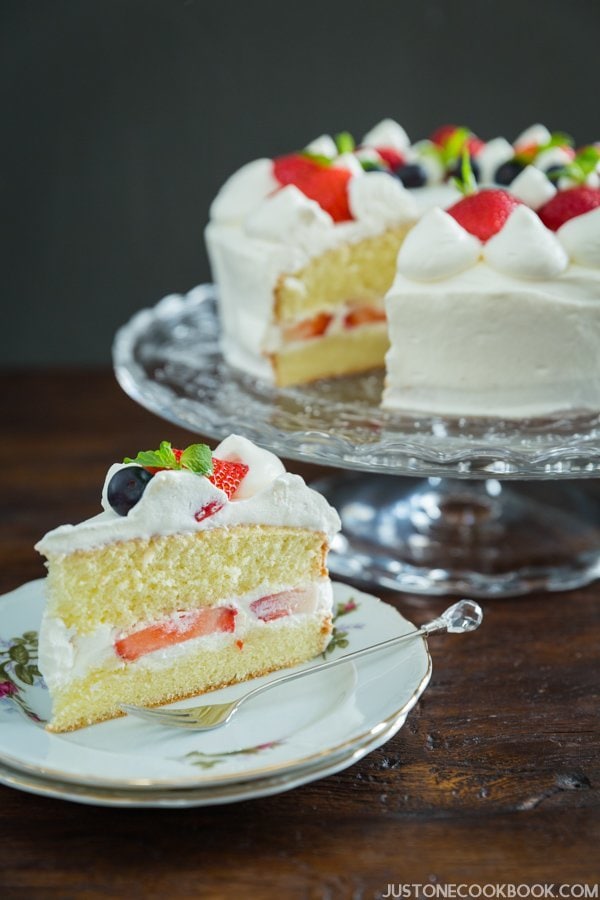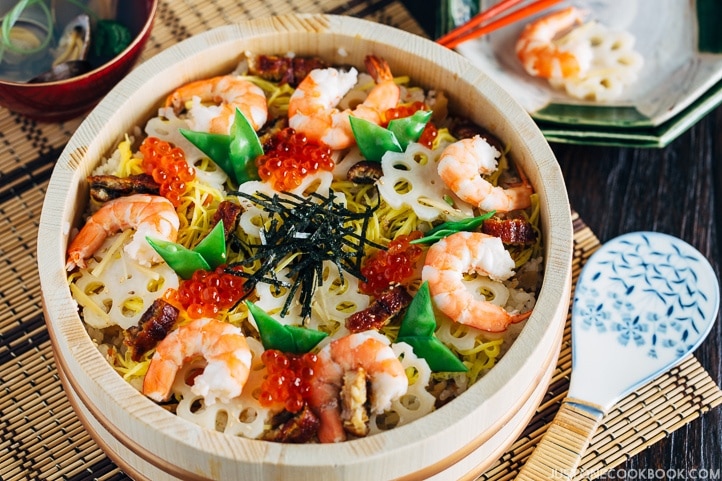
Hinamatsuri or Girl’s Day in Japan is celebrated with special foods, such as chirashi sushi, clam soup, and strawberry daifuku.

Every year on March 3rd in Japan, we celebrate Hinamatsuri – also known as Doll Festival (雛祭り) or Girl’s Day – to wish and pray for the health and future happiness for all the young girls. It is not an official holiday, but one that most young Japanese girls are excited about.
On this special occasion, Japanese families who have young daughters will display their special Hina Dolls or Hina Ningyo (雛人形) on red-cloth covered platforms. When a baby girl is born, her parents or grandparents would buy a set of Hina Ningyo or they pass their own set down to the girl. The miniature Hina Ningyo in the picture below was gifted by my best friend from Osaka a long time ago, and I look forward to decorating this ornament every year as a symbolic gesture to dedicate the day to my daughter.

The image below (courtesy of Wiki) shows a grander display where the dolls are dressed in traditional costumes laid out hierarchically on a red terraced stand. These dolls are said to represent the emperor, empress, attendants, and musicians of the Heian period, and are used to pray for the health, prosperity, and traditionally, a good marriage which was the hallmark of a good life.
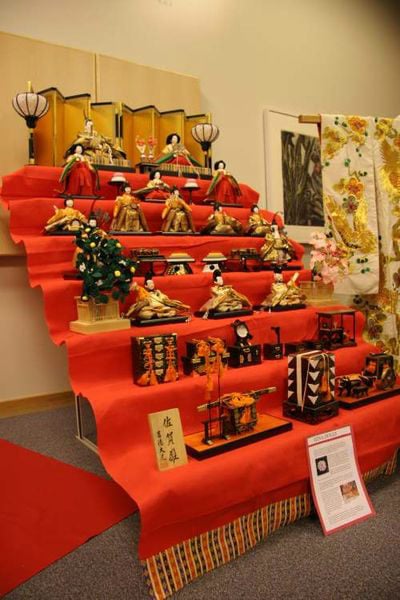
The Origin of Hinamatsuri
Hinamatsuri is believed to have its roots in the ancient Chinese custom to ward off evil spirits by transferring the sin of the body and any misfortunes to the dolls and release them into the rivers. The practice was a form of purification, and families with girls would make hina ningyo (雛人形), or hina dolls, out of straw and took them down to the river on boats, supposedly freeing all the potential bad luck and troubles away.
In some rural areas of Japan, you can still find this custom, called hina-okuri or nagashi-bina, being carried out in which people float paper dolls down the rivers.
Celebrate Hinamatsuri with these traditional & special foods
In addition to the doll display, the Japanese also celebrate Girl’s Day by eating special foods. Since it’s springtime in Japan, you’ll see many spring and pink color theme foods and sweets being eaten on this day. If you have a daughter(s) and are planning to prepare some special meal to celebrate this holiday, below are some recipes you could make for the festivity.
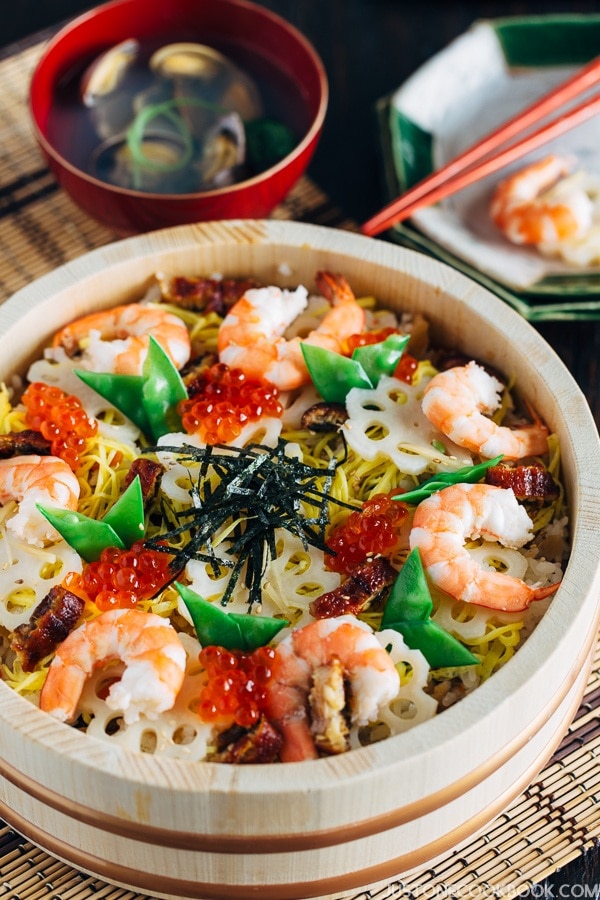
1. Chirashi Sushi ちらし寿司・五目寿司・ばら寿司
The Japanese typically eat Chirashi Sushi on Girls’ Day. It’s colorful and pretty, perfect for girls! I also have a quick recipe with premade Chirashi Sushi Mix that is widely available in Japanese/Asian grocery stores.
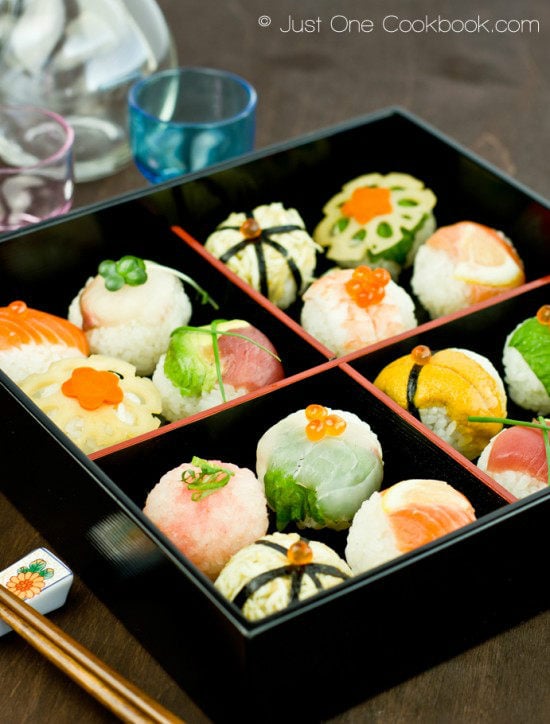
2. Temari Sushi 手まり寿司
These colorful and beautiful sushi balls are called Temari Sushi, and they are perfect for celebrating Girl’s Day! It’ll be fun to set up a DIY Temari Sushi Party for your children or girls!
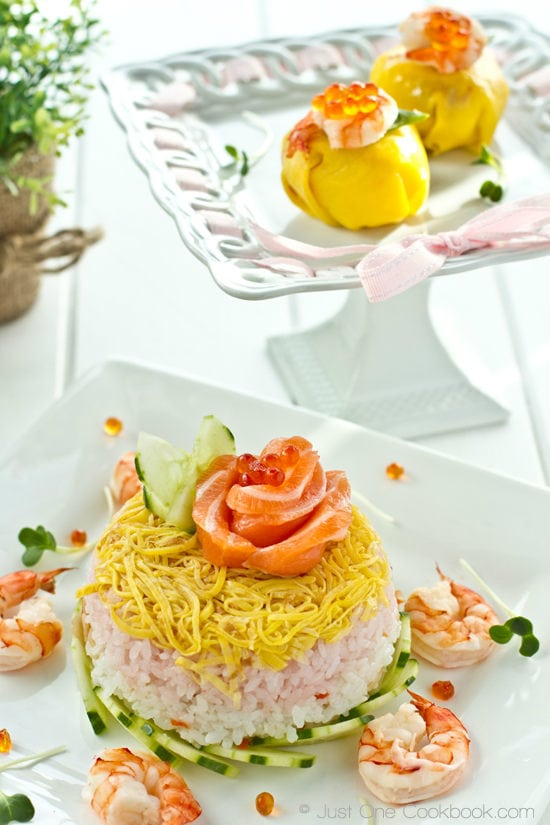
3. Chirashi Sushi Cake & Chakin Sushi ちらし寿司ケーキと茶巾寿司
Layered like a flower petal, this Chirashi Sushi Cake will be the centerpiece of the menu. It might look difficult to make but trust me, it’s really easy!
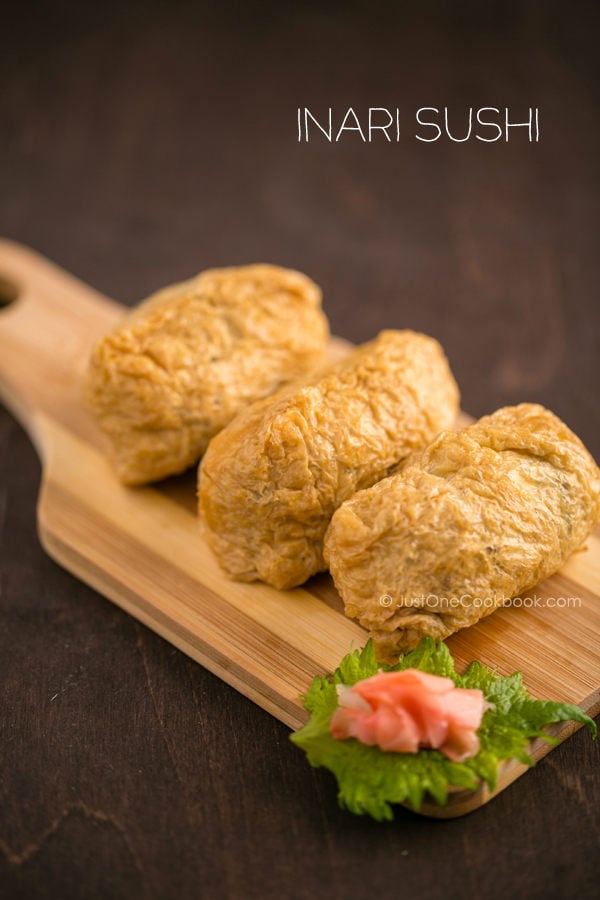
4. Inari Sushi 稲荷寿司
For finger food, Inari Sushi is a popular dish to serve at the Girl’s Day celebration. My recipe is slightly different from the traditional method, but you’d enjoy making these rice rice-stuffed tofu pockets sushi.
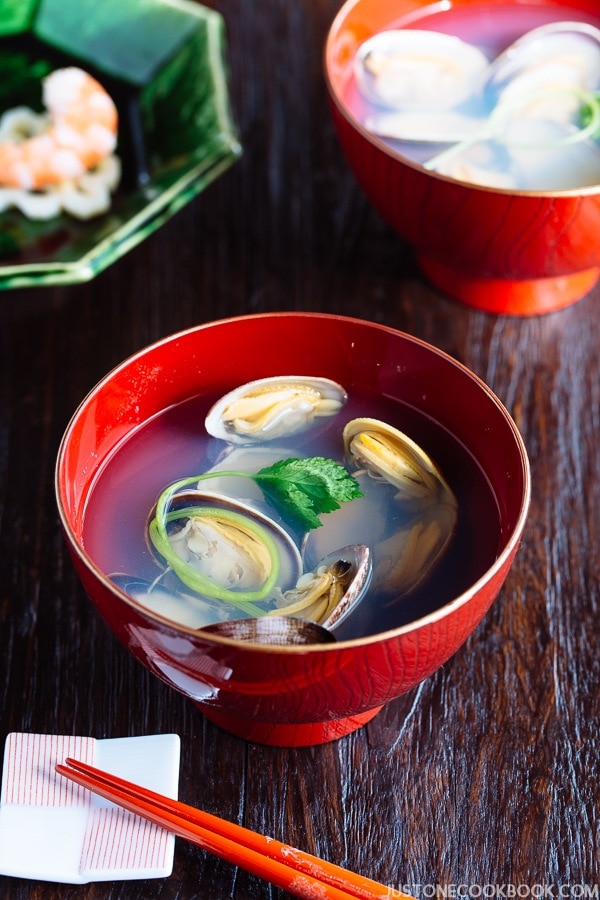
5. Ushio-jiru or Clam Soup うしお汁・はまぐりのお吸い物
Ushio-jiru is a clear soup made with seafood such as white fish or clams, and seasoned with only salt and sake. Clear Clam Soup is the most popular soup to go with chirashi sushi. I have a Clam Soup recipe that has miso flavor.
6. Futomaki 太巻き
Futomaki is a traditional thick sushi roll typically filled with vegetables and sometimes include cooked fish. Since you can prepare the festive-looking sushi ahead of time, it makes a great dish to celebrate events like Hinamatsuri.
7. Cherry Blossom Rice Balls 桜のおにぎり
Your daughter(s) and friends would be very excited if you make these Cherry Blossom Rice Balls (桜のおにぎり) for them. Adorned with the beautiful pink blossoms, they make the occasion extra special. If the girls are into cooking, why not get their help in making the rice balls too. You can buy the salt-pickled cherry blossoms from this online store that ships internationally!
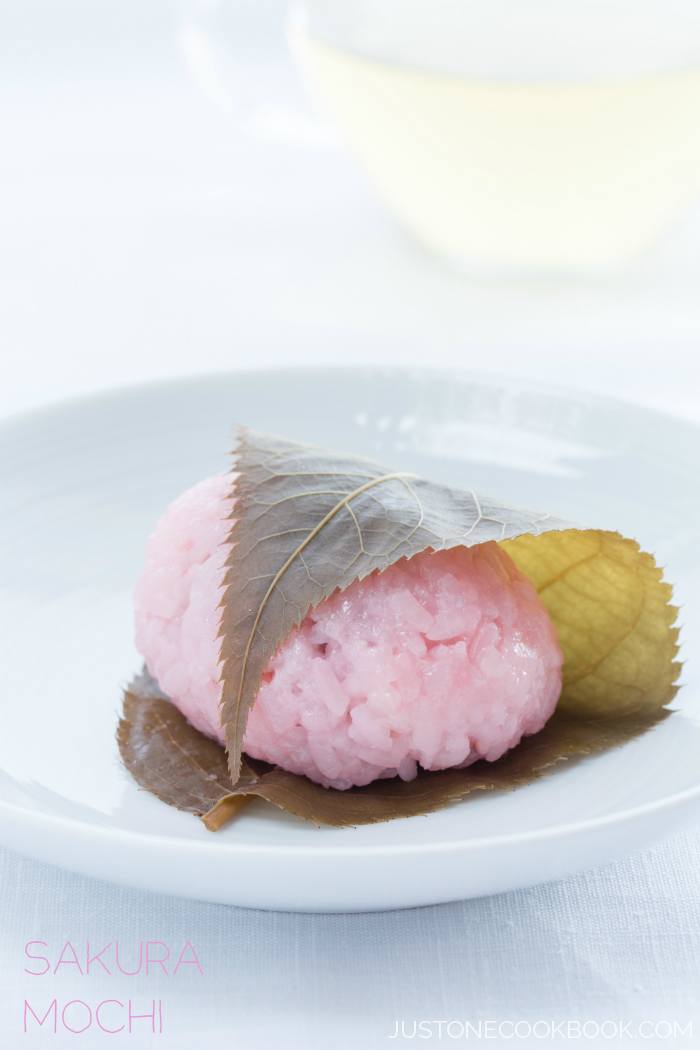
8. Sakura Mochi 桜餅
For desserts, you can enjoy spring-theme sweets such as Sakura Mochi. The salt pickled cherry leaf gives a nice contrast to the sweet red bean mochi.
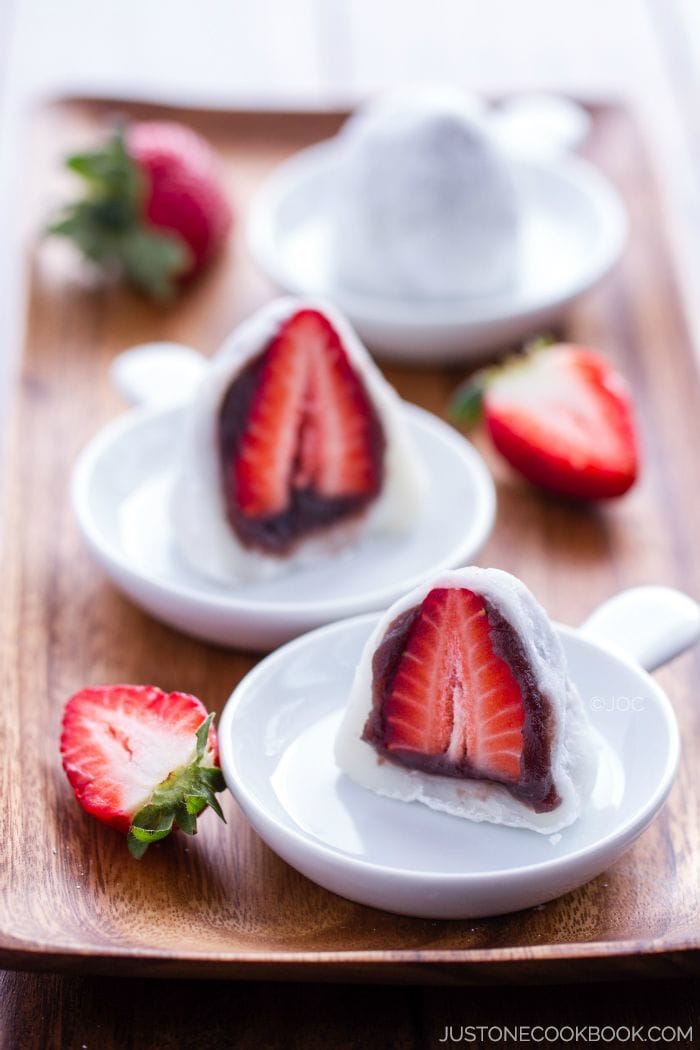
9. Strawberry Daifuku Mochi いちご大福
Another popular dessert is Strawberry Daifuku. Tangy and sweet strawberry wrapped with sweet red bean paste and soft and chewy mochi. Japanese strawberries are in season during spring, so this spring-theme dessert is perfect for Girl’s Day!
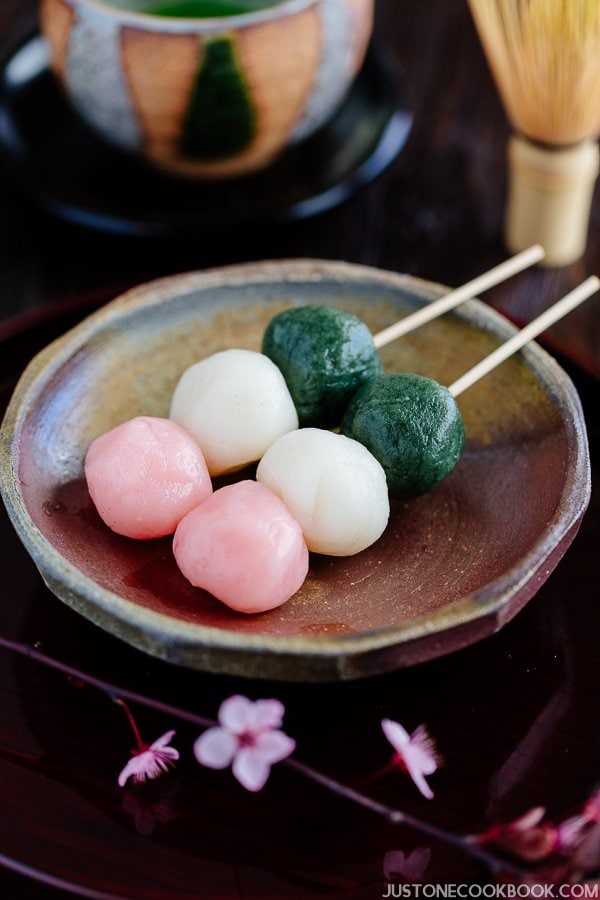
10. Hanami Dango 花見団子
Hanami Dango is enjoyed during cherry blossom viewing and these three-color rice balls (Sanshoku Dango) is a popular treat in spring!
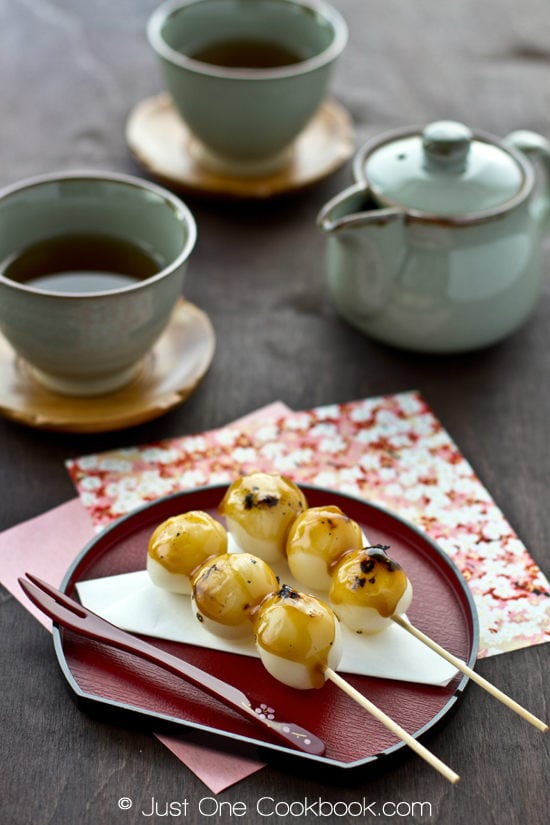
11. Mitarashi Dango みたらし団子
Classic Mitarashi Dango is much easier to make compared to Sanshoku Dango. Enjoy the savory sweet glaze on top of chewy dango mochi!
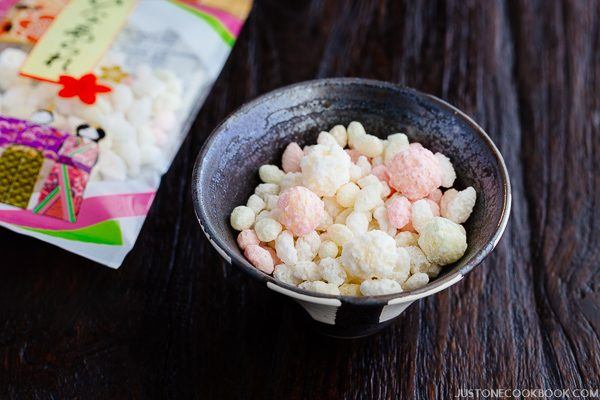
12. Hina Arare 雛あられ
On Hinamatsuri, kids enjoy eating these rice crispy snacks called Hina Arare. The rice crackers are coated with sugar but it’s not too sweet and has a nice crisp texture. You can purchase these colorful treats in Japanese grocery stores.
13. Cherry Blossom Cookies 桜クッキー
Made with butter, sugar, and flour and salt-pickled cherry blossoms, these Cherry Blossom Cookies are crispy, buttery and so pretty. You can smell and taste the cherry blossoms, which is the highlight of these cookies.
14. Japanese Strawberry Cake 苺のショートケーキ
Nowadays, many people also like to buy cakes to celebrate Hinamatsuri. If you’re up for a baking project with your daughters, you can make this Japanese strawberry cake with homemade whipped cream. Nothing is more satisfactory than a simple homemade cake. They would be proudly bringing this to school and share the celebration and culture with their friends.
ENJOY HINAMATSURI!
I hope you enjoy these Hinamatsuri or Girl’s Day recipe menus we’ve put together. Happy Hinamatsuri!
Sign up for the free Just One Cookbook newsletter delivered to your inbox! And stay in touch with me on Facebook, Pinterest, YouTube, and Instagram for all the latest updates.
Editor’s Note: This post was originally published on Mar 1, 2013. This post has been updated with new content in February 2019.
